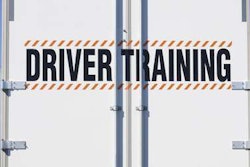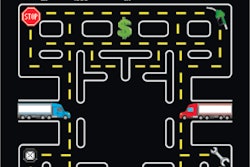 Curt Valcovik, director of driver training for Maverick Transportation, says that orientation training plays an important role in driver retention.
Curt Valcovik, director of driver training for Maverick Transportation, says that orientation training plays an important role in driver retention.Editor’s note: this is the third and final installment in the “high-tech driver recruiting” series.
Part one looked at ways to fast-track driver applicants. Part two explored ways to engage drivers with online advertising.
Every week, drivers attend orientation meetings at motor carriers of all types. These are drivers who have been recruited and qualified in terms of work experience and driving records. Only a few training meetings stand in their way of getting behind the wheel and resuming their careers.
Not everyone will make it that far, however. Some may drop out early due to lack of knowledge or skill to perform the job. Others will go through orientation only to quit a few weeks later. Most will not stay around long enough to celebrate a one-year work anniversary.
For whatever reason, onboarding drivers is full of challenges. While trucking is first and foremost a people business, technology is helping carriers make the transition more seamless for drivers.
Maverick Transportation, a 1,500-truck carrier based in North Little Rock, Ark., has a stringent employment screening process compared to the industry as a whole. Its drivers must pass a hair follicle drug test, as one example, and are tested for sleep apnea.
Maverick has diverse operations that include flatbed, temperature control and glass on specialized trailers. During orientation, all drivers must also go through a custom training program and master an array of computerized and instructor-led courses on safety, compliance and other topics.
“We want to attract a better quality person because of our brand,” says Curt Valcovik, director of driver training. “Our culture demands that we put the right person behind those maroon trucks.”
The company uses a learning management system (LMS) from EBE Technologies to streamline its training process. The LMS provides the framework for its courses and training content that include videos, PowerPoint presentations, tests and more.
The system gives instructors a real-time assessment of drivers as they proceed. Drivers that fall behind are given an individualized Driver Action Plan, or DAC for short, to help put them back on the road to success.
Examples of DACs include helping drivers with their note taking ability or reading. Overall, fewer drivers are dropping out since it initiated the DACs in 2014. Last year the training department had 100 DACs; each one represents a driver that “might otherwise have decided they are not Maverick material,” he says.
“Drilling down to individuals has really helped our turnover percentages in orientation alone,” he says. Last year, its turnover rate during orientation was about 21 percent, a number he expects will continue to go down. “Good training will keep that bucket from draining.”
The annual turnover rate of the fleet is about 62 percent. Last year, Maverick received about 58,000 leads of which it processed 4,287 and hired two percent overall.
“People come to us because of our educational program and culture. They make them want to be part of us,” he adds.
Navajo Express, a 1,100 truck refrigerated carrier based in Denver, Colo., plans to announce a significant change to its driver pay structure to address one of the pitfalls it has identified with new drivers joining its organization.
On Monday, May 18, it will begin a guaranteed daily wage for drivers with under a certain amount of experience. The program has some conditions like the driver must be “willing to work,” says Collin Varner, director of marketing, but “they do not have to run heavy miles right off the bat.”
Varner anticipates that this change will help drivers feel more comfortable as they become familiar with the company and its systems, which “allows us to make sure we are operating in a safe fashion.”
This new pay program will be added to its existing onboarding process where drivers are set up with mentors to help with training and development during the first weeks on the job. New drivers are also set up with fleet managers that oversee a similar group of less-experienced drivers, he says.
The impetus for this change came from conducting exit interviews with drivers to identify areas of improvement, he says. Currently, the turnover rate of Navajo is in line with the industry as whole, he says, but “we are taking a lot of steps to get it better.”













